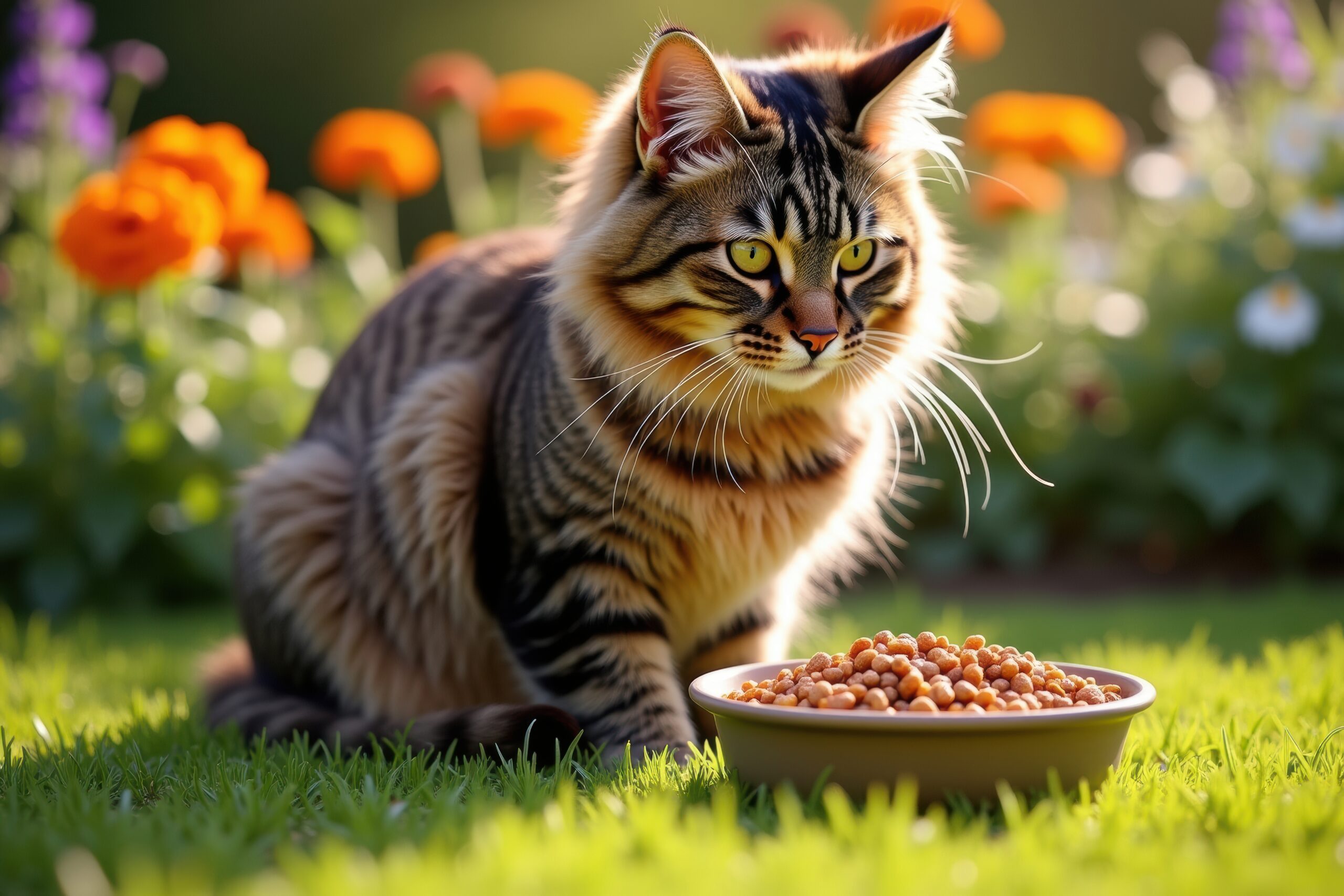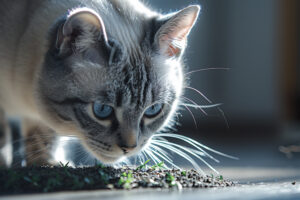
The selection of appropriate diets for your feline friend becomes challenging because numerous options exist in the market. Grain-free cat food stands as one of the main nutritional trends that cat owners follow today. Cats benefit from grain-free diets or this trend exists solely as a marketing ploy.
The blog explores essential factors about grain-free diets for cats by examining both advantages and disadvantages and essential information needed to decide properly for your cat. Our goal is to deliver a complete guide that explains everything about grain-free cat feeding including feline nutritional requirements and false beliefs.
Why Do People Choose Grain-Free Diets for Cats?
The popularity of grain-free diets rose because of the widespread acceptance of gluten-free and Paleo human dietary trends. Pet food manufacturers create an appeal by promoting grain-free diets to customers who think these options deliver superior nutrition compared to traditional foods. What factors motivate owners of cats to select this dietary approach?
Common Reasons for Considering Grain-Free:
- Many cat owners avoid grain because they believe it creates the most common food allergies in their pets. Most owners who keep pets believe eliminating grains from their diets minimizes allergic reactions.
- Some owners believe that grains create digestive problems in feline stomachs because they are unnatural substances.
- Grain-free pet food advertisements commonly present these products as natural diet-compatible foods with superior quality.
- Pet owners who practice grain-free eating habits tend to apply this dietary choice to their pets.
The real health benefits that cats receive from grain-free diets remain uncertain. Let’s examine the facts.
The Requirement of Grain as a Dietary Component in Cat Diets
The question remains whether grain-free diets provide better benefits for cats. The first step to determine proper nutrition for cats requires understanding their dietary needs.
Cats Are Obligate Carnivores
As obligate carnivores cats need to consume mostly meat products in their diet. Their bodies require animal-based proteins together with taurine arachidonic acid and vitamin A which they cannot produce independently.
Grains, such as corn, wheat, and rice:
- The nutritional requirements of cats do not include grain as essential components like protein and fat.
- Cats can obtain specific carbohydrate energy sources through their diet although their carbohydrate needs are lower than those of dogs and humans.
- Pet food manufacturers add grains to their products mainly for kibble binding purposes and as filler ingredients.
The Grain-Allergy Myth
Veterinary research indicates that grains appear as one of the rarest allergens affecting cats. Animal proteins from chicken, beef and fish have a higher probability than grains to cause allergic reactions in cats. According to Tufts University Cummings School of Veterinary Medicine research the true grain sensitivity rate in cats remains less than 1% (source: Tufts University Cummings School of Veterinary Medicine).
Pros and Cons of Grain-Free Diets
Grain-free diets carry both positive and negative aspects similar to other feeding methods.
Advantages of Grain-Free Cat Food
- The low allergenic potential of grain-free diets makes them suitable for cats who show sensitivity to grains because they remove digestive and skin problems.
- Several grain-free diets contain elevated animal-based proteins that bring their protein content closer to the diet of natural carnivores.
- Grain-free food brands keep away low-nutrient add-ins from their products in order to focus on selecting better ingredients.
Disadvantages of Grain-Free Cat Food
- Grain-free cat food costs substantially higher than regular food products in the market.
- The FDA’s recent research indicates that specific grain-free formulas can possibly raise the risk of dilated cardiomyopathy (DCM) which affects the hearts of cats and dogs. (Source: FDA Study on DCM)
- Grain-free labeling does not imply superior quality in cat food products. The ingredients used to replace grains in grain-free cat food often include legumes and potatoes and tapioca but provide no health advantage over grains.
- The majority of cats do not require grains for their health since they present no universal harm.
You need to weigh the advantages and disadvantages of grain-free diets specifically for your cat to make an informed decision about their nutrition.
A Quick Nutritional Comparison [Table]
|
Feature |
Grain-Free Diet |
Grain-Inclusive Diet |
|
Protein Levels |
Typically higher |
Moderate protein |
|
Primary Carbs |
Legumes, potatoes, or tapioca |
Grains (wheat, corn, rice, etc.) |
|
Cost |
Generally higher |
More affordable |
|
Suitability |
Ideal for grain-allergic cats |
Suitable for most cats |
|
Health Risks |
Possible DCM link in some cases |
Not associated with DCM |
The Following Questions Address Grain-Free Cat Food
- Is grain-free good for kittens?
Kittens need food containing high protein and fat along with many calories to grow properly. Consult with your veterinarian before giving your kitten grain-free food because they need to evaluate its appropriateness for their developmental requirements.
- Does my cat’s allergy condition benefit from eating grain-free diet?
A grain allergy diagnosis is required for your cat before switching to grain-free food because such a dietary change will not help manage allergy symptoms. Cats develop protein allergies more frequently than other allergic reactions.
- Does consumption of grain-free cat food leads to possible heart disease development?
Research indicates that heart disease (DCM) might develop as a result of feeding grain-free diets. The replacement of grains with legumes (such as peas and lentils) seems to be the cause of this effect. Cats on grain-free diets need regular veterinary check-ups when you notice any concerning symptoms.
- Should senior cats eat grain-free?
Older cats require food containing lean proteins together with ingredients that are easy to digest. Consult with your veterinarian before picking a grain-free diet when your senior cat has particular health issues.
How to Choose the Right Cat Food for Your Pet
- Consult Your Vet
Veterinary consultation should always be the first step in choosing a diet for cats who need special attention.
- Check the Ingredients
First ingredients should display premium protein sources when selecting your cat food. Selection of cat food should exclude meals that contain heavy amounts of additives together with artificial ingredients.
- Monitor Your Cat
Your observation of your cat’s dietary response should focus on both grain-free and non-grain-free options. Observe your cat for alterations in fur condition and stool quality and behavior patterns and energy patterns.
- Introduce Slowly
A gradual transition of 7-10 days when changing diets helps prevent stomach discomfort in cats.
Final Thoughts on Grain-Free Diets for Cats
Is grain-free better for cats? Some cats require grain-free diets but the majority of cats do not need this specific dietary approach. The dietary requirements of cats remain complex because each individual cat requires a specific dietary plan.
The diet that works best for cats should promote their health together with their energy levels and overall well-being. Your veterinarian stands as the most reliable source to help you determine the right course of action.

Leave a Reply